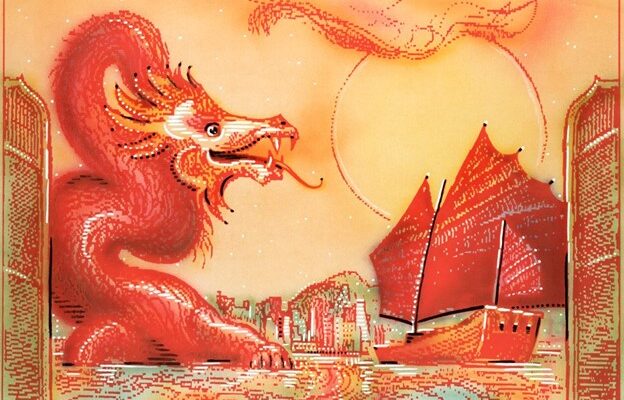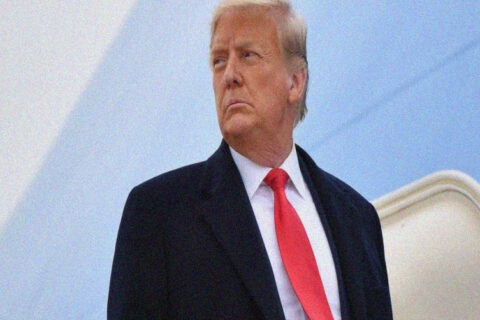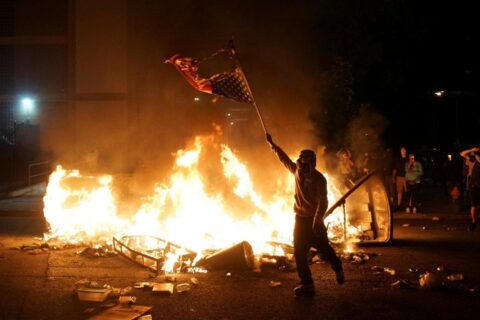Author’s Note: This is the fifth entry in a multipart series examining the decline of the American Empire and what it means for the world on a regional basis. This article will focus on China and the Pacific.
China is the lynchpin, along with incompetence at home, that drives American decline. In a sense, American decline is the story of the world going back to the way it was before World War II – a multipolar world where various regional powers have their own sphere of influence, in contrast to the bipolar world of the Cold War or the unipolar version of the post-Cold War order, where one or two great powers are able to exercise authority over the rest of the globe. As was mentioned in the introductory essay, the American Empire has taken on various roles that were once split between various nations. Russia may rule the Orthodox world and Turkey and Iran may compete over the Islamic world, but none of these nations seriously project to be a global power on the level of the United States in the era of Pax Americana.
This is not the case with China. China is poised to be a global power and, frankly, already is. Consider the three major pillars of American power – military, economic, and cultural. China can now challenge all three. As far as the military is concerned, China’s sheer size, in terms of population, gives it a divisive advantage that the U.S. has little chance to overcome. In terms of raw population, there are roughly four Chinese citizens to every one American. That is a possible 4:1 kill rate, something that has rarely been accomplished by nations with comparable technological development. The compared number of soldiers is not much better. The total number of active-duty U.S. soldiers (all branches combined) is 1,005,725. The number for China is 2.8 million. Again, this is a nation with comparable technology, this is not a handful of British troops controlling all of India, a situation where the technological gap between the two sides was staggering. Globohomo has somehow made the situation worse by purging Dixians from its ranks, traditionally the best of the Empire’s soldiers. As hard as it may be, a bunch of country boys from the Tennessee mountains or the Virginia aristocracy might be able to pull off the impossible and, at least, inflict devastating Chinese casualties in a hypothetical “hot” war. The new, “woke” military cannot.
Though not as stark regarding the military comparison, China is also beginning to supersede the U.S. in terms of economic might, too. Currently, the U.S. has the biggest economy in the world in terms of nominal gross domestic product (GDP), while China is in second. But the Chinese economy is growing, while the American economy is, at best, stagnant. And that is only if we consider the nominal GDP. If we review the purchasing power parity (PPP) GDP, China is now not only larger than the U.S., but around 20% bigger. One of the advantages of the PPP GDP is that it accounts for what the currency can actually purchase. For all of China’s problems, they are exceeding the U.S. in key economic areas, and this is not getting any better. Important industries are now located in China. When COVID hit, many Americans were horrified to learn that our medication industry was now in China. If China wants to, it can easily bring the American Empire to its knees by simply cutting off medication/medical supply production, and all of a sudden Americans are now being denied their heart medication.
But nowhere is this paradigm shift we are witnessing more pronounced than on China’s cultural power. One of the biggest strengths the U.S. has, or had, is its ability to project power via culture consumption. Everyone knows McDonald’s and Mickey Mouse as worldwide icons. Even something as Americana as “the cowboy” has a strong presence outside the U.S. However, China is beginning to overtake the U.S. on this front and its impact is now being felt here. Hollywood is at the point where a handful of high-profile film franchises (Marvel, Star Wars, etc.) are expected to keep the entire industry running. Now, this has been the case for decades, at least since Jaws and Star Wars rewrote the rules of the summer blockbuster. Nonetheless, these franchises have to gross at least a billion dollars to be considered a proper hit and there is no way to do that without China. This means that China has considerable power to veto what it does not like. During the 1980s, the Soviet Union did not have such a power, and that is why we could get a film like Red Dawn. Those days are long past, China would prevent Hollywood from making anything that makes it look bad (for example, the atrocious remake of Red Dawn substituted Chinese invaders for North Koreans). We can see something similar in the Hong Kong/NBA dust-up from a few years ago. Many Americans really were disgusted than an American company like the NBA would punish an owner for defending the independence of Hong Kong. But that is exactly what happened. The NBA needs China and cannot afford to jeopardize that relationship.
Even in the event that China does not become a global hegemon, but merely a regional one as in the already mentioned cases of Russia, Turkey, and Iran, this is still a major shift in the American world order. As with many on the Dissident Right, I came up from libertarianism and, more specifically, from the Old Right revival segment of the Ron Paul movement. A disciple of Murray Rothbard, my heroes were Charles Lindbergh and Howard Buffett. Robert Taft was alright, but he was too moderate. In that movement was one central tenant – the restoration of the non-interventionist America of the pre-World War II era, a time period when the U.S. was at peace. It was a world where the U.S. stayed out of the world’s affairs, as the Founders intended.
The truth, as is often the case, is a little more complicated. The U.S. did all what it could to stay out of European wars, but there was also a broad, if not universal, agreement that intervention in Latin America was acceptable. It was considered a matter of national security. Though not as popular or long lasting as American intervention in Latin America, there was still a pre-WWII push for the U.S. to become a Pacific power. The U.S. was involved in the Boxer Rebellion. Hawaii and Guam became U.S. possessions in this era, as did the Philippines. At Versailles, Japan was given far fewer Pacific possessions than they thought they were owed, largely thanks to American pressure; the U.S. didn’t want another Pacific power. Even as a mere regional power, China threatens to push the U.S. from a sphere of influence it has had since the end of the Spanish-American War. At this point, it is a forgone conclusion that it is only a matter of time, China will seize Taiwan. And, China has been exercising more and more influence over nations like Vietnam and Thailand. China can now seriously drive American presence back in the Pacific – Japan, South Korea, and maybe Indonesia. China could fail to become a global hegemon and still seriously damage American standing in the region.
On all three pillars of U.S. hegemony, China is now a serious challenge. The American military is far smaller, just lost a decades long war in Afghanistan, and is purging its natural warfighters. Part of this is unavoidable considering the population differences between the two. But a bad situation has been made worse by the pandering to minorities and leftists in American leadership. In raw numbers, China and the U.S. are economically near equals, but digging deeper will reveal a startling truth – China can shut off the supply of products to the U.S. and collapse the American economy. Culturally, more and more American institutions are appeasing China. All of this points to a future where Chinese power has largely supplanted American authority, and nowhere will this be more felt than in the East Asian Pacific region.







One comment
Comments are closed.